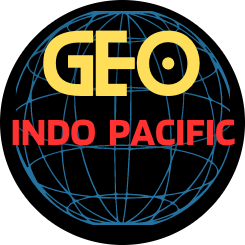
The Indo-Pacific has emerged as a critical theater of geopolitical competition between the United States and China. As both powers vie for influence, regional stability and economic prosperity hang in the balance. Managing this rivalry requires a delicate balance of deterrence, diplomacy, and economic engagement to prevent conflict while ensuring a rules-based order.
Key Drivers of US-China Rivalry
- Strategic Competition – The US seeks to maintain its primacy in the Indo-Pacific through alliances (e.g., Quad, AUKUS) and military presence, while China aims to expand its influence via the Belt and Road Initiative (BRI) and naval assertiveness in the South China Sea.
- Economic Rivalry – Trade wars, tech decoupling (e.g., semiconductor restrictions), and competition over critical supply chains intensify tensions.
- Military Posturing – China’s rapid military modernization and island-building activities challenge US dominance, prompting increased US freedom of navigation operations (FONOPs) and defense partnerships.
- Regional Alignments – Smaller nations like Vietnam, the Philippines, and India seek to balance relations with both powers while avoiding outright confrontation.
Strategies for Managing the Rivalry
1. Strengthening Alliances & Partnerships
The US must reinforce alliances (Japan, South Korea, Australia) while engaging ASEAN and India to create a collective counterbalance to China’s assertiveness. The Quad (US, Japan, India, Australia) should expand economic and security cooperation.
2. Economic Engagement Over Decoupling
Complete economic decoupling is unrealistic and harmful. Instead, the US should pursue “de-risking” – reducing over-dependence on China in critical sectors while maintaining trade in non-strategic areas. Regional trade pacts like the Indo-Pacific Economic Framework (IPEF) can offer alternatives to China-centric supply chains.
3. Crisis Management Mechanisms
To avoid accidental conflict (e.g., in Taiwan or the South China Sea), both nations should establish military hotlines and confidence-building measures, similar to Cold War-era US-Soviet protocols.
4. Support for a Rules-Based Order
The US and its partners must uphold international law, including UNCLOS, to counter China’s maritime claims. Strengthening regional institutions like ASEAN can help mediate disputes.
5. Avoiding Provocations on Taiwan
Taiwan remains the most volatile flashpoint. While the US should continue supporting Taiwan’s defense, it must avoid steps that Beijing perceives as endorsing independence, which could trigger war.
The Indo-Pacific region has emerged as a critical theater for global strategic competition, particularly among major power players such as the United States, China, India, and Japan. Managing rivalry in this region requires a nuanced approach that balances cooperative engagement, strategic deterrence, and the promotion of rules-based governance.
Key Strategies for Managing Rivalry:
1. Strengthening Alliances and Partnerships:
Regional powers and external stakeholders should prioritize the development of alliances and partnerships to ensure collective security and economic stability. The Quad (comprising the US, India, Japan, and Australia) serves as a prime example of such collaboration, promoting maritime security and ensuring freedom of navigation.
2. Promoting Multilateral Forums:
Organizations such as ASEAN provide a platform for dialogue and diplomacy, which are essential in mitigating tensions. Strengthening these forums can help address disputes and encourage adherence to international norms.
3. Encouraging Economic Interdependence:
Trade and investment can serve as stabilizing factors in regional relationships. By fostering economic ties among rivals, the costs of conflict can be significantly heightened, incentivizing peaceful coexistence.
4. Upholding International Law:
The enforcement of international maritime laws, particularly in contested areas such as the South China Sea, is crucial. Ensuring that disputes are settled through legal frameworks, such as those set by the United Nations Convention on the Law of the Sea (UNCLOS), can prevent unilateral actions that escalate tensions.
5. Crisis Communication Mechanisms:
Establishing direct communication channels between military and political leaders of rival nations can prevent misunderstandings and de-escalate potential conflicts. Regular dialogues and hotlines can be effective tools in managing crises.
6. Balancing Military Presence:
While military deterrence is critical, over-militarization of the region can exacerbate tensions. Balancing force projection with confidence-building measures is essential to avoid triggering an arms race.
7. Addressing Non-Traditional Security Threats:
Climate change, piracy, and humanitarian crises are shared challenges that can foster collaboration among rivals. Joint efforts in these areas can build mutual trust and reduce hostility.
Managing rivalry in the Indo-Pacific demands a commitment to diplomacy, restraint, and a shared vision for regional stability. By prioritizing dialogue and cooperation over confrontation, power players can work toward a sustainable and peaceful future in this strategically vital region.
Conclusion
The US-China rivalry in the Indo-Pacific is unlikely to fade, but conflict is not inevitable. A strategy combining deterrence, diplomacy, and economic resilience can help manage tensions while preserving regional stability. The goal should be competitive coexistence, not Cold War-style containment, ensuring that the Indo-Pacific remains free, open, and prosperous.





